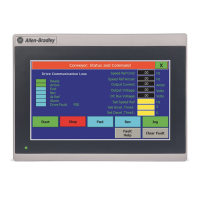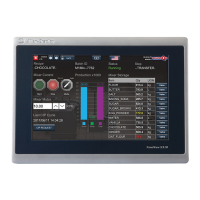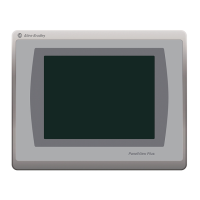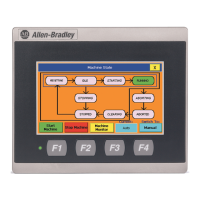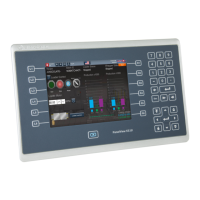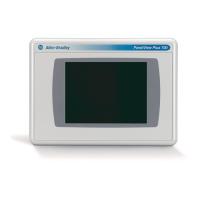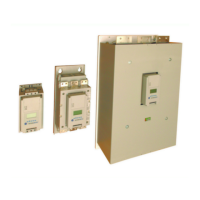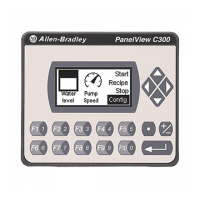Publication 2711P-UM001D-EN-P - September 2005
8-8 Troubleshooting
Ethernet Problems
• Check the LED indicators at the Ethernet connector. The
green LED indicates a communications link and should be ON.
The amber LED indicates data activity and should be flashing.
Verify that there is a connection to the hub?
• Check the cable connections and quality of cable. Check for
good connections and things such as quality, crimping, hub
connection, and uplink ports.
• Check the IP Address of the Built-In Ethernet Controller.
From Configuration Mode, select Terminal Settings>Networks
and Communications>Network Connections>Network Adaptors.
If DHCP is enabled, the device expects a valid IP address to be
acquired within a several seconds after startup. The TCP/IP
protocol automatically assigns 169.254.nnn.nnn when it fails to
acquire an IP address from the server. In general, an IP address
that begins with 169 will not support a network connection.
A bad Ethernet connection and the absence of a valid IP address
are typically reported in a Communications error message box
with the Winsock critical error 10065 - "No route to host".
• Check for conflicting IP addresses. If DHCP is not enabled,
make sure the IP address you specify is not in conflict with the
address of another device on the network.
• Check the Device Name of the terminal. Do not allow
devices on the network with same (host) name. From
Configuration Mode, open Terminal Settings>Communications
and Networks>Network Connections>Device Name.
• Contact your Network Administrator to check peer or
server settings. The “other side” of the Ethernet connection
may also be a problem.
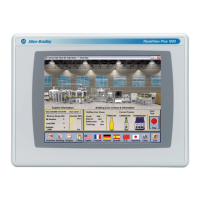
